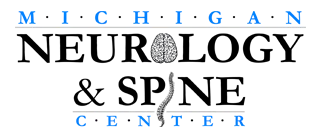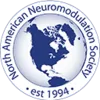Treating Spasticity with Botox
Botulinum toxin is a muscle-relaxing medication used to decrease spasticity related to multiple sclerosis (MS) and other neurological conditions. What is spasticity?
Spasticity is a movement disorder that can occur in conditions which affect the brain or the spinal cord, such as multiple sclerosis, stroke, cerebral palsy, spinal cord injury, or brain injury. Spasticity is caused by an imbalance between signals that inhibit or stimulate the spinal cord. This results in hyperexcitable stretch reflexes, increased muscle tone, and involuntary movements.
What are the symptoms of spasticity?
Spasticity causes muscle stiffness and tightness which interferes with voluntary movements. Spasticity can also cause muscle spasms (jerky involuntary movements) or clonus (repetitive involuntary movement).
Stiffness and spasms are often bothersome and sometimes painful, and they interfere with the ability to carry out daily activities. Spasms may also disrupt sleep and increase daytime fatigue. When spasticity is severe, contractures (fixed limitations of range of motion) may develop.
How can spasticity be treated?
Stretching, exercise, and rehabilitation are the first line of interventions for spasticity. Oral medications are often effective, but may cause side effects such as drowsiness. When spasticity affects only a few muscles, local injections of botulinum toxin can be helpful. When spasticity is diffuse and severe, intrathecal baclofen (ITB) may be a good treatment option.
What is botulinum toxin (BT)?
Botulinum toxin is a medication derived from a neurotoxin produced by bacteria (Clostridium Botulinum). In its natural form, this toxin causes botulism, a severe condition that can be fatal. The botulinum toxin (BT) medication is designed to be used safely without causing botulism. There are two commercially available forms of BT currently:
- botulinum toxin type A (Botox®)
- botulinum toxin type B (Myobloc®)
How does BT work?
Normally, the brain sends messages to the muscles so they can contract and move. These messages are transmitted via the nerves to the muscles by a substance called acetylcholine. BT blocks the release of acetylcholine from the nerve to the muscle, therefore the muscle relaxes.
How is BT given?
BT is given as an intramuscular injection (into the muscle). The injections are given during an outpatient visit, which lasts 1 hour. Your health care provider will determine beforehand which muscles need to be injected. Because BT does not travel far from the injection site, several injections are performed during one visit. To ensure that BT is injected in the right place, short electrical impulses are sent through the needle used for the injection, to make the muscle contract. In some cases, electrical signals from the muscle are recorded via the needle, for the same purpose.
What can I expect after the injections?
There are no activity restrictions after the injections. The effect of BT is usually not felt until a few days, up to 2 weeks after the injections. We usually ask that you return for a follow-up visit or call with an update 2 to 3 weeks after the injections.
The effect of BT is expected to last between 2 and 6 months, then gradually wears off. Most often, the injections are repeated every 3 months. In many cases, physical or occupational therapy is needed after the injections to maximize the benefits of BT. In all cases, it is necessary to stretch and exercise daily at home.
What are the advantages of BT over other treatments for spasticity?
- BT is usually effective in relaxing the muscles injected, and provides a stable effect for several months.
- BT is preferred when only a few muscle groups are spastic, or when spasticity relief is needed in only a few muscle groups, because it allows one to treat only selected muscles.
- BT is usually very well tolerated, in part because only very small amounts of medication go into the bloodstream.
What are the disadvantages of BT?
- The benefits of BT are limited to the muscles injected. Therefore, it may not be a good treatment choice when many muscles are spastic.
- The effect of the injections is always temporary, therefore the injections need to be repeated at regular intervals to maintain the therapeutic benefits.
- There are limits to the amount of BT that can be injected during one session, and to the frequency at which BT can be injected, in part because the body can create antibodies against the medication. These antibodies are not dangerous, but may neutralize the effects of BT.
- BT is not yet approved by the FDA for the treatment of spasticity, even though it has been used worldwide for this indication for many years, and its benefits and risks are well-known. Therefore, insurance companies may not cover the treatment.
What are the side effects of BT?
- The main side effect is the pain that may occur with the injections. No local anesthesia is given in most cases, because the exact sites of injections are determined during the procedure.
- The muscles injected can be sore for a few days after the injections.
- BT causes temporary partial weakening of the muscles injected. In most cases, the benefits of spasticity relief outweigh the effects of increased weakness. BT does not cause weakness in muscles that have not been injected.
- When BT is used for a long time, it may cause atrophy (thinning) of the muscles injected. This atrophy is reversible if the therapy is discontinued.
- There have been reports of temporary side effects such as flu-like symptoms, palpitations, tingling sensations, or nausea. These side effects are rare, and usually go away within 1 to 2 days.
- The FDA has reported rare cases of more severe side effects in adults treated with BT, such as difficulty swallowing or breathing.
What happens if I develop antibodies to BT?
In our experience, it is rare that people develop antibodies to BT. If this happens, you may notice that the treatment does not help any more, but no harmful effects from the antibodies have been reported. In some cases, switching from one type of BT to the other helps restore the treatment effect.
How do I know if I am a good candidate for BT therapy?
BT therapy is usually considered when spasticity needs to be relieved in only a few muscle groups. It can be used in addition to other treatments for spasticity. If your health care provider thinks that you may be a candidate for BT therapy, you will be scheduled for an evaluation. During this visit, you will also be given detailed information about the treatment, so you can make an informed decision.
Treating Migraines with Botox
How Botox Is Used to Treat Migraines
Botox to treat chronic migraines is given at intervals of about 12 weeks as multiple injections around the head and neck to try to dull future headache symptoms, the FDA says in a statement.
The FDA says it’s important that patients who suffer chronic migraines discuss with their doctors whether Botox is appropriate for them.
Allergan Inc., the maker of Botox, says in a statement that the FDA’s approval applies to people with chronic migraine, which it defines as a “distinct and severe neurological disorder characterized by patients who have a history of migraine and suffer from headaches on 15 or more days per month with headaches lasting four hours a day or longer.”
The company says that when treating chronic migraine, qualified medical specialists administer 31 Botox injections into seven specific head and neck sites.
It says that Botox, when injected at labeled doses in recommended areas, is expected to produce results lasting up to three months depending on the individual patient.
Botox Studies
“Chronic migraine is a debilitating but under-recognized neurological condition,” Scott Whitcup, MD, Allergan’s chief scientific officer, says in the company’s announcement. “Oftentimes, chronic migraine patients mistakenly self-diagnose their symptoms as headaches or infrequent migraine and treat them with drugs that provide rapid, but temporary, relief rather than seeking an evaluation, diagnosis and treatment from a qualified headache specialist.”
He says with the FDA’s approval of Botox to prevent migraines, there is now a new option “to reduce the days and hours spent in pain as a result of this condition.”
It says the FDA’s approval for use of Botox to fight migraines was based on the results of two studies involving 1,384 adults in North America and Europe.
The studies, published in the March 2010 issue of Cephalalgia , report that patients treated with Botox experienced a major decrease in the frequency of headache days, according to the Allergan statement.





